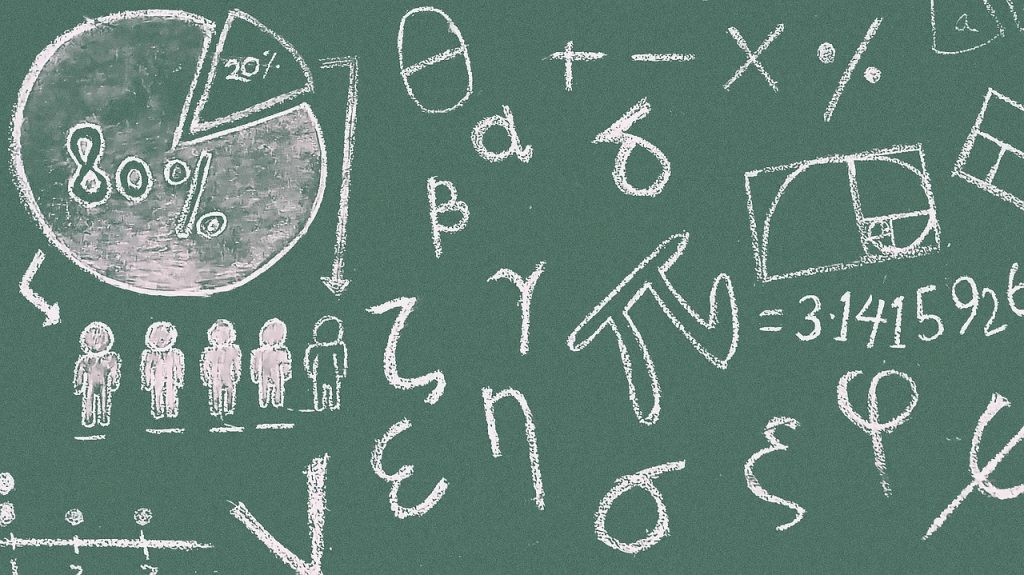A 270 Year Old Mathematical Formula Can Teach Us A Lot About Innovation

Accountants tell us that numbers don’t lie, because for them numbers are the same as facts. Mathematicians see it differently though. They see numbers as abstract representations of reality that, when combined with other numbers, have an almost mystical ability to create patterns that unlock hidden truths.
In other words, as the great early 20th century numbers theorist G. H. Hardy put it, “A mathematician, like a painter or a poet, is a maker of patterns. If his patterns are more permanent than theirs, it is because they are made with ideas.†Identifying these hidden truths can open up new possibilities and take us in new directions.
For example, the development of non-Euclidean geometry in the early 1800s paved the way for Einstein’s general relativity a century later. In much the same way, in David Stipp’s new book, A Most Elegant Equation, the veteran science writer describes how deep connections between numbers can help us bridge the gap between intuition and real world applications.
Euler’s Formula
The focus of Stipp’s book is an equation that was first published by Leonhard Euler in 1748 but is still marvelled at today. It looks simple enough, with just five factors, but somehow manages to combine infinite series with geometry and strange “imaginary numbers†and somehow makes it all come out to zero simply by subtracting a one.
Written in its most common form, it looks like this:
eiÎ + 1=0
Yet despite its casual appearance, the equation takes on an almost magical significance in the world of mathematics. In fact, when researchers scanned mathematicians brains, they found that just looking at the equation invoked the same reactions as when most people listen to music or see a beautiful painting.
Richard Feynman called it “the most remarkable formula in mathematics.” Yet the interest is far more than aesthetic. The formula’s real-world applications in electrical engineering and physics make it far easier to convert ideas between separate branches of mathematics. Of course, Euler had none of this in mind when he came up with it back in 1748!
So we are left with a bit of a mystery. How did a solitary mathematician, working with just a quill and paper, come up with something that wouldn’t become applicable until hundreds of years later? It’s almost as if Beethoven or Mozart had written a symphony for the electric guitar.
The Anatomy Of A Hunch
In the early 1990s, researchers at the University of Iowa performed an unusual experiment. Subjects were given four virtual decks of cards on a computer screen, each with cards that would either penalize or reward them in game money. After about 40 or 50 tries, the players got pretty good at choosing which were the best decks, although they couldn’t say why.
In Descartes’ Error, one of the researchers, neuroscientist Antonio Damasio, explains that we partially record experiences as emotional stimuli and later use these somatic markers to make decisions. In a sense, Damasio argues that “gut feelings†are responses to actual, physical stimuli that recall earlier experiences, even if we aren’t consciously aware of them.
Stipp notes in his book about Euler’s formula that the math-related centers of our brain are considerably older evolutionarily than our language centers. He also points to studies that show that even infants show an innate numbers sense long before they acquire the ability to express themselves.
It should also be mentioned here that Euler was truly a genius. Besides his formidable mathematical talents, he also spoke five languages and could recite large works of literature from memory. So with his extremely large cognitive capacity, maybe it isn’t that surprising that he saw connections others didn’t.
Working With Two Minds
Very few of us have the abilities of someone like Euler. In truth, very few in history can match his gifts. Still, we all build up a database of experiences and many of us attain significant expertise in one area or another. This knowledge often leads us to see connections that we can’t verbalize or validate effectively, but we feel strongly about.
Yet how can we make the distinction between a worthy “gut feeling†from one that comes from a bad lunch? In Thinking, Fast and Slow, Nobel laureate Daniel Kahneman points to two modes of thinking that we use to make decisions, which he calls “System 1†and “System 2.†The first is more instinctual and automatic, the second more rational and deliberative.
What made Euler’s work more than just conjecture is that he spent countless hours working to prove his hunches. That’s how he was able to use his “System 2†to keep his “System 1†honest. In doing so he inevitably came across more facts that were encoded into his unconscious mind, which led to more and better hunches.
We tend to think of imagination as separate from “real work,†but the truth is that the two are often tightly intertwined. In fact, if we want to create real value, we need to learn how to combine them more effectively.
The Power Of Truth
As noted above, there was no way for Euler to know what the practical value of his famous formula would be. He worked on it because he thought it was interesting and probably had some vague sense that the connections he uncovered were important somehow. Mostly, he was probably just seeking truth for truth’s sake.
In much the same way, Einstein had no idea that there would be any practical applications of his work within his lifetime. Some of his most important discoveries, in turn, were based on the work of mathematicians that had no way of guessing that their work would figure into his. Nevertheless, their combined efforts led to things like nuclear power and GPS satellites.
The problem we often run into in our over-optimized, modern world is that we are too quick to discard ideas that we can’t immediately make use of. Because of this, we often fail to account for the fact that the most useful things often seem useless at first. We idolize those that find a market for gadgets, but take little notice of the discoveries that make them possible.
Yet it is the search for hidden truths that, as Vannevar Bush put it, “turn the wheels of private and public enterprise.† Discovery necessarily resides in the realm of the unknown and, if we are to build better things for a better world, that’s where we need to explore.
An earlier version of this article first appeared in Inc.com
Wait! Before you go…
Choose how you want the latest innovation content delivered to you:
- Daily — RSS Feed — Email — Twitter — Facebook — Linkedin Today
- Weekly — Email Newsletter — Free Magazine — Linkedin Group
 Greg Satell is a popular author, speaker, and innovation adviser who has managed market-leading businesses and overseen the development of dozens of pathbreaking products. Follow Greg on Twitter @DigitalTonto. His first book, Mapping Innovation, was selected as one of the best business books of 2017 by 800-CEO-READ.
Greg Satell is a popular author, speaker, and innovation adviser who has managed market-leading businesses and overseen the development of dozens of pathbreaking products. Follow Greg on Twitter @DigitalTonto. His first book, Mapping Innovation, was selected as one of the best business books of 2017 by 800-CEO-READ.
NEVER MISS ANOTHER NEWSLETTER!
LATEST BLOGS
How Brexit Has Affected UK E-commerce Businesses
Photo by Zyro on Unsplash The popularity of online shopping was already growing at an impressive rate – and…
Read MoreOvercoming range anxiety: three tips for EV owners
Photo by Jenny Ueberberg on Unsplash In the last few years, electric vehicles (EVs) have become more and more…
Read More


